How Serbia's “Dream Factory” Was Reborn
By Hu Yifeng
[Serbia] Bojana Stokic
In the industrial city of Smederevo in northeastern Serbia, many people’s aspirations in life start from an old steel plant.
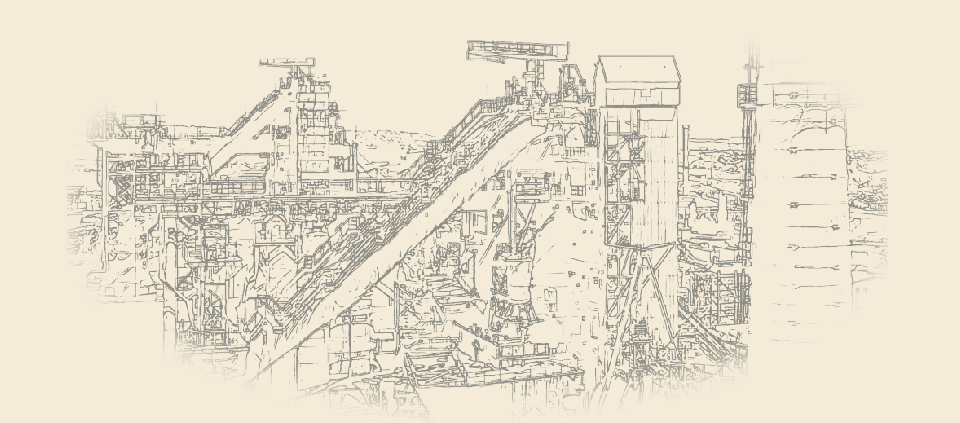
When the Smederevo Steel Plant, built in 1913, was in its heyday, it employed more than 5,000 workers and contributed 40 percent of the city’s revenue. In addition, its more than 1,600 local suppliers indirectly provided more than 16,000 jobs. Many families had worked in the plant for generations.
As you enter through the gate of the plant, you will be greeted by the tagline “Pride of Serbia” painted in giant letters on the wall. The steel plant is the economic lifeline of the city, its rise and ebb determines the rise and fall of the city. For Smederevo’s people, it has been a dream factory whose ups and downs in the recent past hold profound memories for them.
Miro’s Worries Are Gone!
Miroslav Radanovich, nicknamed Miro, joined the factory 15 years ago. At that time, it was doing well after its acquisition by a foreign company for US$23 million. Miro thought he would have a stable job, working for such a large enterprise, and his imagination ran free, thinking of the happy life he would enjoy one day. He bought land, planning to build a house where he would start a family.
But then came the financial crisis of 2008 and the unfortunate steel plant began to go downhill rapidly. The orders began to decline and the plant started to lose money year after year. Finally, only one blast furnace remained in bare production. Life became more and more difficult and the workers were worried about themselves and their families. They could see little hope.
In 2012, the situation got worse when the foreign company announced its withdrawal. The Serbian government reclaimed ownership of the plant for US$1 and began to look for new investors while continuing to run the plant.
Although production resumed, due to the aging equipment and other factors, the output was less than one third of the designed capacity for several years. Besides, the single product the factory manufactured had low added value and the losses mounted to at least €120 million a year. To keep the plant going by cutting costs, the authorities slashed workers’ wages twice. The workers were helpless in the face of inevitability and life continued to be hard.
Miro’s wages were also cut and delayed. The bank that had agreed to give him a loan changed its mind. Though he had managed to build a house it was bare as he didn’t have money to rig it out. By that time he had been married for nine years; but due to the great pressure, he couldn’t decide whether he and his wife should have a child. He found his dreams dashed one by one.
The turning point came in April 2016, when the HBIS Group, China’s largest steelmaker, signed an agreement with the Serbian government to acquire the Smederevo Steel Plant for €46 million. The plant was renamed HBIS Serbia. In the second month of the takeover, the company offered all employees a bonus to boost their morale. Miro found new hope.
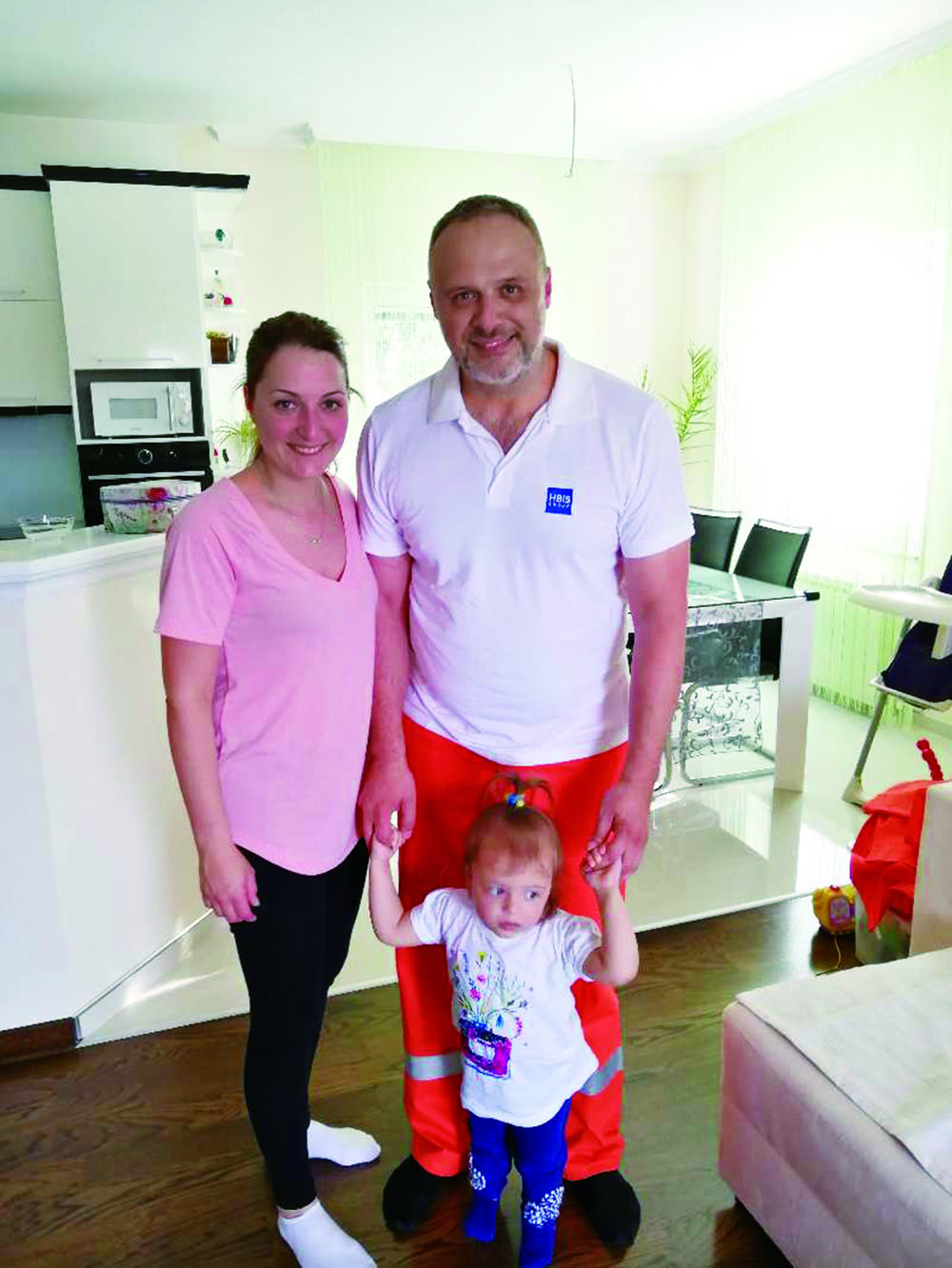
Miro with his wife and daughter
At the end of 2016, after a lot of hard work, the steel plant that had run at a loss for seven consecutive years made significant improvement and both production and sales reached their highest level since 2010. The turnaround was achieved in only eight months.
This time Miro’s application for a bank loan to do up his house was successful and in May 2017, his daughter was born. As the steel plant’s losses disappeared, Miro’s worries disappeared too. Today, his dreams are coming true one by one.
A Memory to Cherish
When she looks out of the window of her office in the steel plant, Maria Petric can see the lush green lawn with the “HBIS Serbia” sign and a little further, the flowing Danube, a symbol of the life of the Serbian nation.
However, Maria says for her, the best image is the one she has downloaded from the Internet on her desktop computer. Whenever she has important guests, she tells them the story of the precious photograph.
Two months after HBIS Serbia was set up, a high-level Chinese delegation visited the plant. Smederevo gave them a rousing greeting and they received another very warm welcome at the plant. The Serbian president and prime minister were waiting for them at the gate of the plant while workers and their families lined the streets.
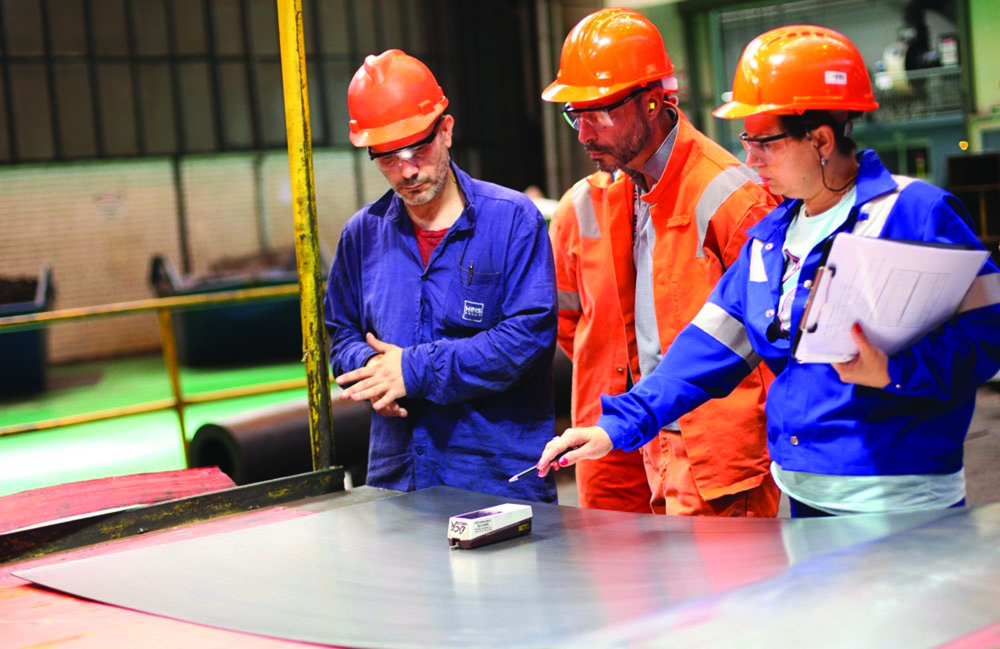
Technicians testing finished steel plates
Maria tells the visitors other smaller details as well. The mini red flags with five stars, the Chinese national flag the workers waved to welcome the Chinese delegation, have been kept by them workers as mementos that are proudly displayed on their machines. “This is a way we show our feelings of friendship toward China,” Maria said. “All of us are satisfied with the operation of the steel plant after the HBIS takeover. Workers’ wages and morale and exports have all improved.”
Other workers agree with her. They said with the arrival of the Chinese friends, the plant has improved and they are full of optimism about the future.
“It is our pride and glory that the Chinese leading officials visited our plant!” remarked Golan Simich, who has been with the steel plant for more than 20 years. “I have two sons and I hope both of them will work in the factory one day.”
His wish may come true. Many of HBIS Serbia’s recruits are the second generation of the steel workers. Of the 5,000-plus workforce, only nine are from China. Some Serbian employees have become company executives.
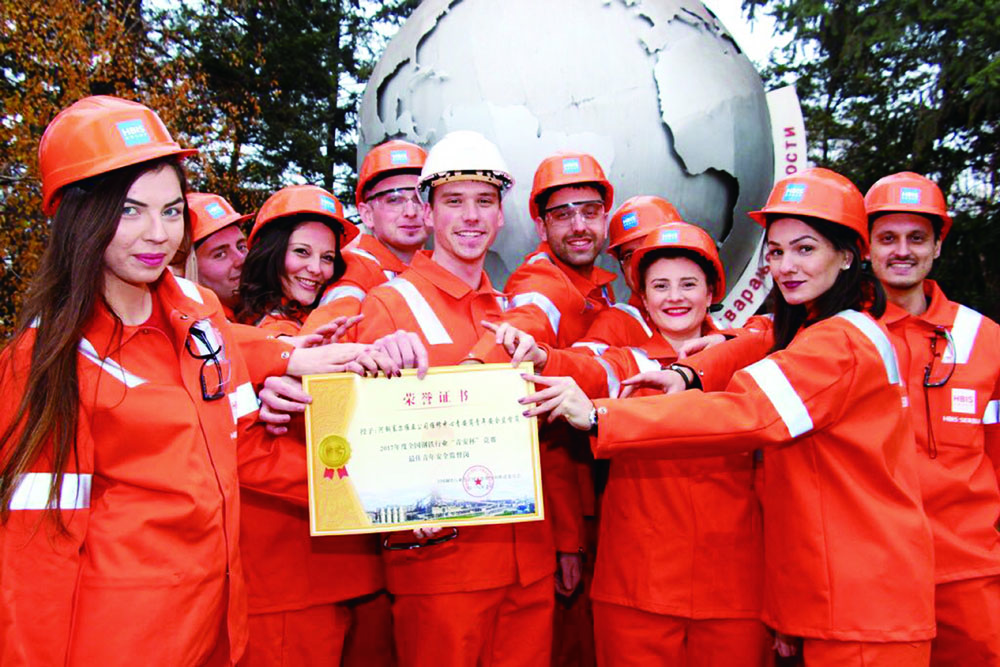
Serbian employees displaying their honorary credential for safety supervision
Today, the spacious hot rolling workshop of the steel plant is filled with the bustle of machines as steel plates roll off the production line in quick succession. After its vicissitudes, thanks to the cooperation with China, the Smederevo Steel Plant has been born again, opening a new chapter in its history.
A Dynamic “Dream Factory”
The takeover by HBIS has not only revitalized the steel plant, but also led to the prosperity of the city.
“When the plant was at its lowest ebb, there were all kinds of problems every day, and we didn’t know if we would have our job the next day,” said Vladimir Illich, another worker. “We are happy that the Chinese company has increased its investment and strengthened the management, which has improved cost efficiency. My income has jumped by 30 percent, and we feel confident about the future.”
In the past, Paita Vaskov’s sons were unemployed. But with the revival of the steel plant, the city’s service industry has perked up and all of them have found jobs. “HBIS changed the fate of my family,” Vaskov said.
To boost the local economy, HBIS Serbia encourages local contractors and suppliers to participate in bids for major overhaul and reconstruction projects, giving priority to local enterprises under same conditions. It has also established long-term strategic partnerships with many local companies.
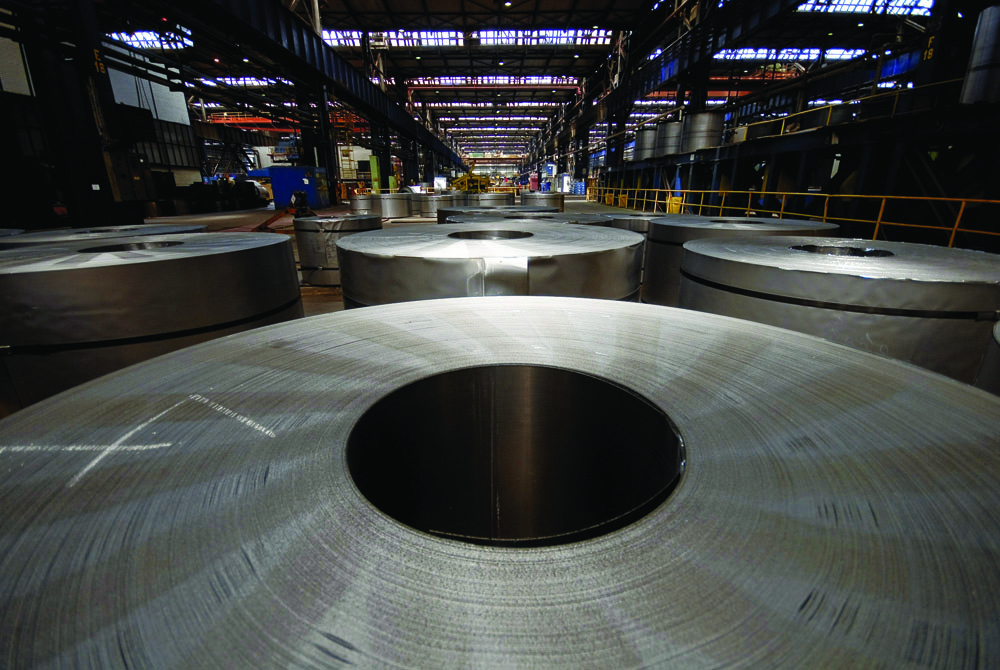
HBIS Serbia's products
In 2018, HBIS Serbia produced 1.769 million tons of steel and realized a sales revenue of US$1.06 billion.
On the first and 15th day of each month, when the workers are paid with clockwork punctuality, they bid farewell to each other by saying “See you in the supermarket tomorrow!” With a growing and stable income, the city residents have found a new confidence to plan for their future. With the revival of the steel plant, local education, health and transportation facilities and other living conditions have significantly improved with more fiscal allocation. The other significant change is that Smederevo now ranks first in Serbia in the birth rate.
Newborn babies bring hope for the future.
The reborn steel plant has boosted Smederevo’s confidence and strength, making it resurgent and prosperous. As a Serbian proverb goes, “Prijatelj je plod vremena (Friends are the fruits of time).” Time will testify to the friendship between the two countries that have joined efforts to create a better future for the “dream factory”.
FOR MORE
Project Overview
In April 2016, the HBIS Group signed an acquisition agreement with Serbia’s Smederevo Steel Plant to set up HBIS Serbia, which retained all 5,000 workers of the plant.
HBIS Serbia has made use of its technology, management, marketing and other advantages to adjust and optimize strategic planning, organizational control and resource allocation. It has also used its expertise and experience to make capital investment, and ensure cost control and risk prevention and control. In less than a year, the steel plant that had run at a loss for seven years was turned around and its competitiveness was comprehensively improved. The company follows the principle of “localization in employment, benefit and culture”.
Over the last three years, HBIS Serbia has invested nearly US$200 million in large-scale technological transformation. With its overall technical level significantly improved, the factory has set a number of production records. It has opened a new chapter in China-Serbia cooperation on production capacity and contributed to the traditional friendship between China and Serbia.


